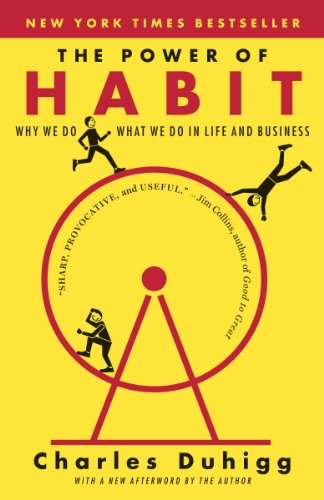It can be hard to stick to a schedule because, in most cases, we have so many things to do that it can be hard to find the time for it all. So if you find yourself playing catch up and getting behind with everything, you need to change your approach to your schedule.
Check out our tips for planning and sticking to your daily schedule.

The Power of Habit
by Charles Duhigg
⏱ 14 minutes reading time
🎧 Audio version available
Tip 1.
Your first step is to physically write out a daily list either with old fashioned pen and paper or by using a scheduling app such as Calendar or Asana. Here you can add your work tasks and deadlines plus any appointments or commitments you need to meet.
Once you have written it down, you can see if your daily list is even doable and block in time that can be allotted for each task. If you have too much to do, focus on the most important tasks and schedule the less important tasks for the next day.
Tip 2.
Make writing your list part of your daily routine. Yes, it is another task, but it will pay off to create a realistic schedule. So whether you do this at the end of the day or early in the morning over a cup of coffee, it doesn’t matter; the important thing is that you do it and do it regularly. Once you get into the habit of list writing, it helps bring clarity and order into your day.
Tip 3.
Make sure that your daily list includes both work-related tasks and personal tasks. We all need to keep a good life-work balance to prevent burnout, so try to reflect this in your schedule.
You can arrange your work-related tasks and personal tasks under separate headings, but if you don’t keep your entire schedule in one place, you will likely double book yourself. For example, arranging to meet a friend for coffee without realizing that you have an article to write or a business meeting scheduled for the same time frame.
Tip 4.
It is important to include the small tasks as well as the larger ones. Of course, all your jobs need to be completed, but including smaller tasks gives you an idea of what you are trying to achieve in the day. Tick them off once you have completed them so you can see exactly what you have achieved over the course of a day. Ticking off small completed tasks is almost as satisfying as completing larger projects, either way, it tells you that you are sticking to your schedule and are in control.
Tip 5.
Create realistic deadlines. We often underestimate just how long any one task will take, so if you don’t allow enough time and miss your deadline, you will have to add the new deadline to the next list, and this creates a sense of failure.
Be realistic with your employers and clients too. Most people will prefer that you keep to your deadlines because it is more reliable than promising tomorrow and delivering next week.
Tip 6.
We often assign enough time for a work task but fail to achieve this because we cannot focus. Staying focused can be easier said than done. Most of us get distracted by social media, phone calls, emails, and 101 other distractions.
For example, if you can’t stay off social media, a productivity app such as Forest may help keep you on track. You set the app for a certain amount of time, and if you stay off your phone, it rewards you by growing a tree. If you pick up your phone, the tree dies, and nobody wants that!
Tip 7.
Don’t be afraid to tell people you are unavailable when you are working. Don’t feel compelled to answer personal calls, tweets, WhatsApp messages, or chat with colleagues in the office. Your time is important, and if you respond to people when it is inconvenient, it messes up your schedule. Save social interaction for when you can fit it in, rather than working to other people’s schedules.
Tip 8.
You are not a work machine. You cannot move from one task to another without any breathing space between. So allow yourself a break between work tasks. Now is the time to grab a coffee, look at social media, or anything else that takes a few minutes and leaves you refreshed.
Tip 9.
Don’t be afraid to break up difficult tasks into smaller chunks. So if you have a daunting major work project, you may have to accept that working on this all day is unlikely to help you complete it. On the other hand, splitting it up into sections and completing part of the project when you are fresh is far better than plowing on with it long after your concentration levels have diminished.
Tip 10.
You may find it easier to attack difficult tasks when life is generally quiet, so if you are an early bird, early mornings can be a great time for productivity. However, some people also find that working late is a good solution. Identify your most productive time and use it to work on tasks that require deep concentration so you can work without distractions.
Tip 11.
Finally, always keep an eye on your schedule. Refer back to this, and don’t forget to cross off completed tasks as you achieve them. This not only keeps you focused on your schedule, but it makes you feel good because you can see just what you have accomplished. The great point about a realistic schedule is that it keeps you on track without ramping up stress levels, so it leads to a much happier frame of mind.
What Is Snapreads?

With the Snapreads app, you get the key insights from the best nonfiction books in minutes, not hours or days. Our experts transform these books into quick, memorable, easy-to-understand insights you can read when you have the time or listen to them on the go.


